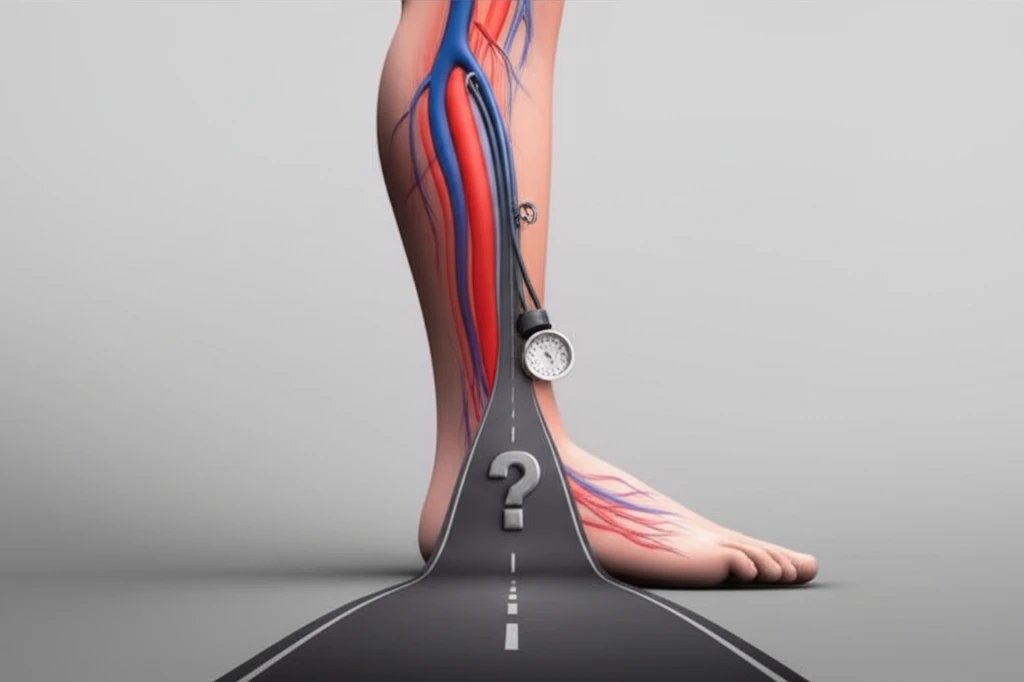
Peripheral Artery Disease: Are You Getting Accurate Ankle Brachial Index Results?
"New research reveals how factors like diabetes and smoking can skew ABI readings, leading to potential misdiagnoses."
The ankle brachial index (ABI) is a common, non-invasive test used to diagnose peripheral artery disease (PAD). PAD affects millions worldwide, particularly older adults. The ABI test measures the blood pressure in your ankles and compares it to the blood pressure in your arms. This comparison helps doctors determine if there is any blockage in the arteries of your legs.
While the ABI test is generally reliable, recent studies have uncovered that the results can vary depending on individual patient characteristics. This variability, known as the 'spectrum effect' and 'spectrum bias,' means that certain factors, such as diabetes, smoking, and age, can influence the accuracy of the ABI test. This can lead to both false positive and false negative results, potentially affecting treatment decisions.
Understanding these nuances is crucial for anyone at risk of PAD, as well as for healthcare providers who use the ABI test. By being aware of the factors that can skew results, patients and doctors can work together to ensure more accurate diagnoses and appropriate care.
Understanding the Spectrum Effect and Spectrum Bias in ABI Testing

The 'spectrum effect' refers to the way the ABI test's sensitivity and specificity (its ability to correctly identify those with and without PAD) changes across different patient groups. For example, an ABI test might be very accurate in one group of people but less so in another. The 'spectrum bias' takes this a step further. It means that these variations can significantly alter the post-test probabilities, leading to misinterpretations of the results.
- Sensitivity and Specificity Variations: The study found that sensitivity (the ability to correctly identify PAD) ranged from 61.5% to 90.9% depending on the subgroup. Specificity (the ability to correctly identify those without PAD) varied from 81.8% to 99.1%.
- Factors Influencing Results: Logistic regression analysis confirmed that factors such as the setting (primary care vs. vascular service), diabetes, smoking status, and age significantly impacted the ABI test results.
- Impact on Positive and Negative Results: Positive ABI tests were less reliable in patients with diabetes, smokers, and those over 75 years old, leading to a higher rate of false positives. Negative ABI tests were less reliable in primary care patients, non-diabetics, and smokers, potentially leading to false negatives.
What This Means for You
If you're at risk for PAD, it's essential to discuss these findings with your doctor. Ask how your individual factors might influence the accuracy of an ABI test. This might involve additional testing or a more comprehensive evaluation of your vascular health. Remember, accurate diagnosis is the first step toward effective management and prevention of PAD-related complications. Keep the conversation open, and work with your healthcare team to ensure you're receiving the best possible care.
